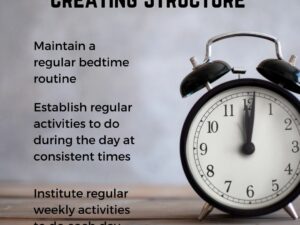September 9, 2019
As the nation continues to process the most recent wave of mass shootings, returning to regular life for some may be more challenging than for others, even if they didn’t have any personal connection to the victims or those involved.

What is vicarious trauma?
A traumatic response can occur from the repeated exposure to details of a traumatic event even if we weren’t present for it. This type of response is called vicarious trauma, and it occurs when we bear witness to the horrifying experiences of others. Vicarious trauma is cumulative and occurs over time. While hearing one traumatic story might be deeply upsetting, it is hearing this story, or other stories like it, over and over again that leads to vicarious trauma.
Those experiencing vicarious trauma integrate aspects of others’ distressing experiences into their own functioning as if the event happened to them first-hand. Just like primary trauma – the type of trauma that directly affects a person – vicarious trauma shifts our view of the world, our sense of safety, our level of trust, our beliefs about justice, and our understanding of ourselves and others. It is an involuntary response to an overwhelming situation and not something we can initially control.

Who is susceptible to vicarious trauma?
We are all susceptible to vicarious trauma. However, some of us are more likely than others to experience vicarious trauma. The following factors increase our vulnerability:
- – Previous trauma (including historical and intergenerational trauma)
- – Current trauma (including social trauma and systematic oppression)
- – Mental health or substance abuse issues
- – High levels of empathy
- – Financial struggles or unstable housing
- – Physical health issues
- – Relationship or family issues
- – Caregiver strain
- – Poor work/life balance
- – Exposure to trauma or others’ suffering through work (health and mental health professionals, teachers, first responders, law enforcement, social workers, etc.)

How will I know if I am experiencing vicarious trauma?
After repeated exposure to traumatic or upsetting events, keep an eye out for the following warning signs:
Emotional Warning Signs
- – Feelings of increased anger, sadness, fear, guilt, hopelessness, and helplessness
Cognitive Warning Signs
- – Negative thoughts about the world, the future, and your ability to make a difference
- – Dissociating or checking out
- – Shutting down
Physical Warning Signs
- – Chronic exhaustion
- – Aches and pains
- – Getting sick more often than usual
Behavioral Warning Signs
- – Isolating from others
- – Coping through increased substance use
- – Avoiding work or other responsibilities
- – Feeling unable to listen or empathize with others
Learn more about building your emotional resiliency to vicarious trauma in our blog post 8 Tools for Building Emotional Resilience.
– Lauren Shechter, LCSW
Sources
American Psychiatric Association. (2013). Diagnostic and statistical manual of mental disorders, DSM-5 (5th ed.). Washington, DC: American Psychiatric Publishing
Clements, et. al. (2018). Secondary Trauma in the Workplace: Tools for Awareness, Self-Care, and Organizational Response in Montana. montana.edu/cairhe/other-investigators/knight-ellis/Secondary-Trauma-in-the-Workplace.pdf
Ries, Julie. (2019). Experiencing PTSD After Shootings, Even If You Weren’t There, Is Normal. https://www.rewire.org/living/experiencing-ptsd-after-shootings-normal/
van Dernoot Lipsky, L. (2009). Trauma stewardship: An everyday guide to caring for self while caring for others. Oakland, CA: Berrett-Koehler.






